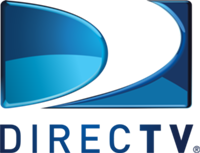 AT&T plans to acquire DirecTV by May 2015, barring any regulatory snags, for $48.5B. This unwieldy combination will create organizational and branding indigestion.
AT&T plans to acquire DirecTV by May 2015, barring any regulatory snags, for $48.5B. This unwieldy combination will create organizational and branding indigestion.
Will the DirecTV name survive? Should it? How will AT&T differentiate it from U-verse?
At 20M+ subscribers, DirecTV is the largest purveyor of satellite-TV in the US. Dish follows with 14M, although it reportedly lost 90K of them in the recent Dish-Fox war. Comcast, a cable-TV carrier with 23M+ subscribers, is attempting to subsume Time-Warner Cable (11M+) — if DC permits.
At the World Economic Forum this week in Davos, Switzerland, Randall Stephenson, AT&T’s CEO, shared his pondering with the Wall Street Journal: “We haven’t decided yet how we are going to brand it. We’re testing the DirecTV brand and the AT&T brand; so, we’re doing a lot of thinking.”
Mr. Stephenson, you should do a lot of thinking:
- Neither AT&T nor DirecTV is wildly popular with customers
- As I explained in “Amazon: Too Big to Brand,” value propositions of large, diversified companies are tough to fathom and articulate
- Pay-TV is a shrinking business: people, especially unemployed Millennials, are both increasingly unable to afford it and uninterested in being forced to take 500 channels that they’ll never watch.
Customer Experience
Have a glimpse at the DirecTV brand, via one of its latest commercials with Rob Lowe:
Cringeworthy? As Mary Poppins would say: Close your mouth; you’re not a codfish.
Now, look at a current AT&T spot:
There is no easy way to combine these two messaging styles and contexts. What they both scream in common, though, is: we’re competing on price.
I was one of the 14M Dish customers caught in the war with Fox News. Upon calling DirecTV to explore the mechanics and consequences of switching carriers, I was subject to a bevy of sleazy cretins worse than used-car salesmen. I stayed with Dish. Moreover, I have enough horror stories about dealing with AT&T — services and billing — to fill a book.
Neither of these companies understands the customer experience — which will worsen after the acquisition — in absolute terms and as it relates to brand. That must change.
More Apropos Is OTC
Sprinkled throughout Stephenson’s Davos interview was the term OTT, industry jargon for “over the top.” Coined in 2012, it connotes TV services delivered via the Internet, instead of cable or satellite. Industry insiders love it. They invoke it and don’t even know why. Do you notice what’s missing from OTT: customer.
Branding that is not customer-centric will fail, every time. This is axiomatic. Customers will not react to, remember, and repeat technojargon.
It’s typical in tech circles to describe the world in vendor-centric, product-centric, industry-centric, technology-centric terms. That’s why most vendors look and sound alike. Why not under the bottom? How about through the middle? Around the side?
More apropos is OTC: over the customer. Even better: WOTC, way over the customer. That’s how I felt when Dish blocked Fox News, which implored me, and all dangling customers, to ditch Dish. Switching carriers is difficult and disruptive: gotcha fees, uncarried channels, and lost DVR-recorded videos.
Frankly, the whole customer experience was over the freaking top!
Parting Advice to Randall Stephenson
You told the Wall Street Journal: “With DirecTV, we have an ability for someone to walk out of an AT&T store with an iPad and lots of programming. No one else can do that.” What if that someone prefers buying an iPad at the Apple store or online? Then what?
Monitor customers’ calls to your support hotline, in real time. You’ll get an accurate sense of AT&T’s brand from their frustrations and your employees’ responses to them.
Focus on value, not on pipes. Why? Customers buy value, not pipes. They understand value, not pipes. Besides, the pipes will forever change; value is a constant. Only after completing this exercise will you be able to decide on the right name and value proposition.
The DirecTV name has one advantage, aside from universal recognition: it describes what customers want: TV delivered directly to them — regardless of how its done.
Bottom Line: DirecTV should pose no branding dilemma, if you acquire it to offer more value to customers.
DirecTV Replaced Rob Lowe with Eli Manning in Stupid Spot
POSTSCRIPT #1: Sling TV: A Giant Step from Cable
POSTSCRIPT #2: Apple Allegedly Planning Internet-TV Service
POSTSCRIPT #3: Millennials Ditching Live TV for On-Demand Internet TV
POSTSCRIPT #4: Dish’s Sling TV Attracts 100K+ Signups in First Month
POSTSCRIPT #5: Americans Moving Rapidly Away from Traditional TV
POSTSCRIPT #6: DirecTV Drops Cringeworthy Rob Lowe Commercials Amid Inaccuracy Complaints
POSTSCRIPT #7: Netflix CEO Reed Hastings Vows End of Broadcast TV by 2035
POSTSCRIPT #8: Verizon Inks InternetTV Deal with ESPN, CBS Sports, and Others
POSTSCRIPT #9: Comcast Drops Bid to Acquire Time Warner Cable
POSTSCRIPT #10: Apple’s 2016 Plans for Ultra-HD TVs Proves TV Is Very Much Alive
POSTSCRIPT #11: Best Buy Beats Street from Sales of Large-Screen TVs
POSTSCRIPT #12: Charter to Acquire Time Warner Cable for $56B
POSTSCRIPT #13: TV Is Still the Most Effective Advertising Medium
POSTSCRIPT #14: Financially Strapped Chicago Now Taxes Online Entertainment Services
POSTSCRIPT #15: FCC Approves AT&T Acquisition of DirecTV (07.24.15)
© 2015 Marc H. Rudov. All Rights Reserved.
About the Author

Marc Rudov is a branding advisor to CEOs,
producer of MarcRudovTV, and author of four books

